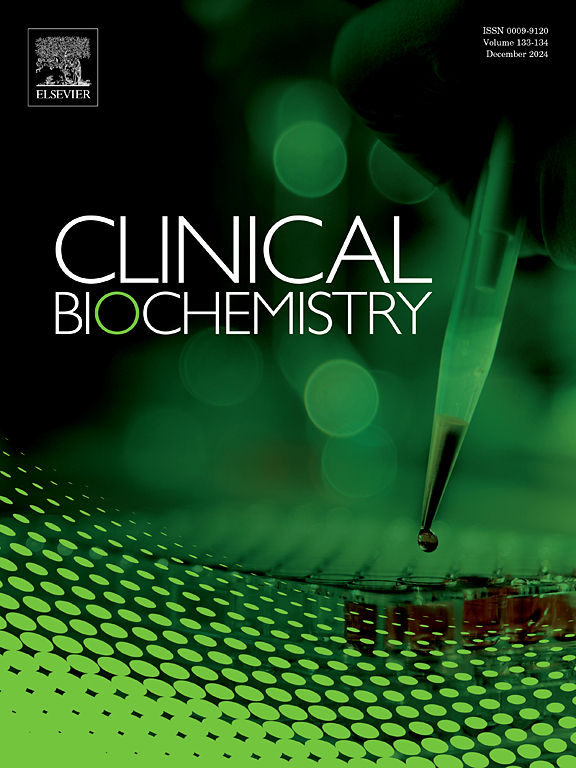Hook effect although rare, still exists
IF 2.1
3区 医学
Q2 MEDICAL LABORATORY TECHNOLOGY
引用次数: 0
Abstract
Background
The hook effect occurs when extremely high concentrations of an analyte in the sample, saturate the antibodies used in the method, leading to falsely low results.
Case
We describe a case observed with the Atellica IM 1600 (Siemens) analyzer for the measurement of human chorionic gonadotropin (β-HCG) in serum of a pregnant woman at the thirteenth week of pregnancy.
Discussion
The β-HCG result was inconsistent with the gestational age and helped us to highlight the hook effect and supported the clinical diagnosis of vesicular mole in the patient. The same sample was also analyzed using the Alinity-i Total β-hCG kit (Abbott), and the authors highlight how differences between diagnostic kits can significantly affect the analytical result.
Conclusions
In cases of discrepancies between laboratory data and clinical findings, it is essential to consult with laboratory specialists to rule out analytical interferences. To minimize the risk of the hook effect, we modified the analytical procedure and submitted a report to Siemens European Support.
钩效应虽然罕见,但仍然存在
当样品中极高浓度的分析物使方法中使用的抗体饱和,导致错误的低结果时,就会发生钩效应。我们描述了一个病例观察用Atellica IM 1600(西门子)分析仪测量人绒毛膜促性腺激素(β-HCG)在妊娠第13周的孕妇血清。讨论β-HCG结果与胎龄不一致,有助于我们突出钩效应,支持患者水疱性痣的临床诊断。同样的样本也使用ality -i Total β-hCG试剂盒(Abbott)进行了分析,作者强调了诊断试剂盒之间的差异如何显著影响分析结果。结论当发现化验结果与临床结果不一致时,应咨询化验专家排除分析干扰。为了减少钩效应的风险,我们修改了分析程序,并向西门子欧洲支持部门提交了一份报告。
本文章由计算机程序翻译,如有差异,请以英文原文为准。
求助全文
约1分钟内获得全文
求助全文
来源期刊

Clinical biochemistry
医学-医学实验技术
CiteScore
5.10
自引率
0.00%
发文量
151
审稿时长
25 days
期刊介绍:
Clinical Biochemistry publishes articles relating to clinical chemistry, molecular biology and genetics, therapeutic drug monitoring and toxicology, laboratory immunology and laboratory medicine in general, with the focus on analytical and clinical investigation of laboratory tests in humans used for diagnosis, prognosis, treatment and therapy, and monitoring of disease.
 求助内容:
求助内容: 应助结果提醒方式:
应助结果提醒方式:


